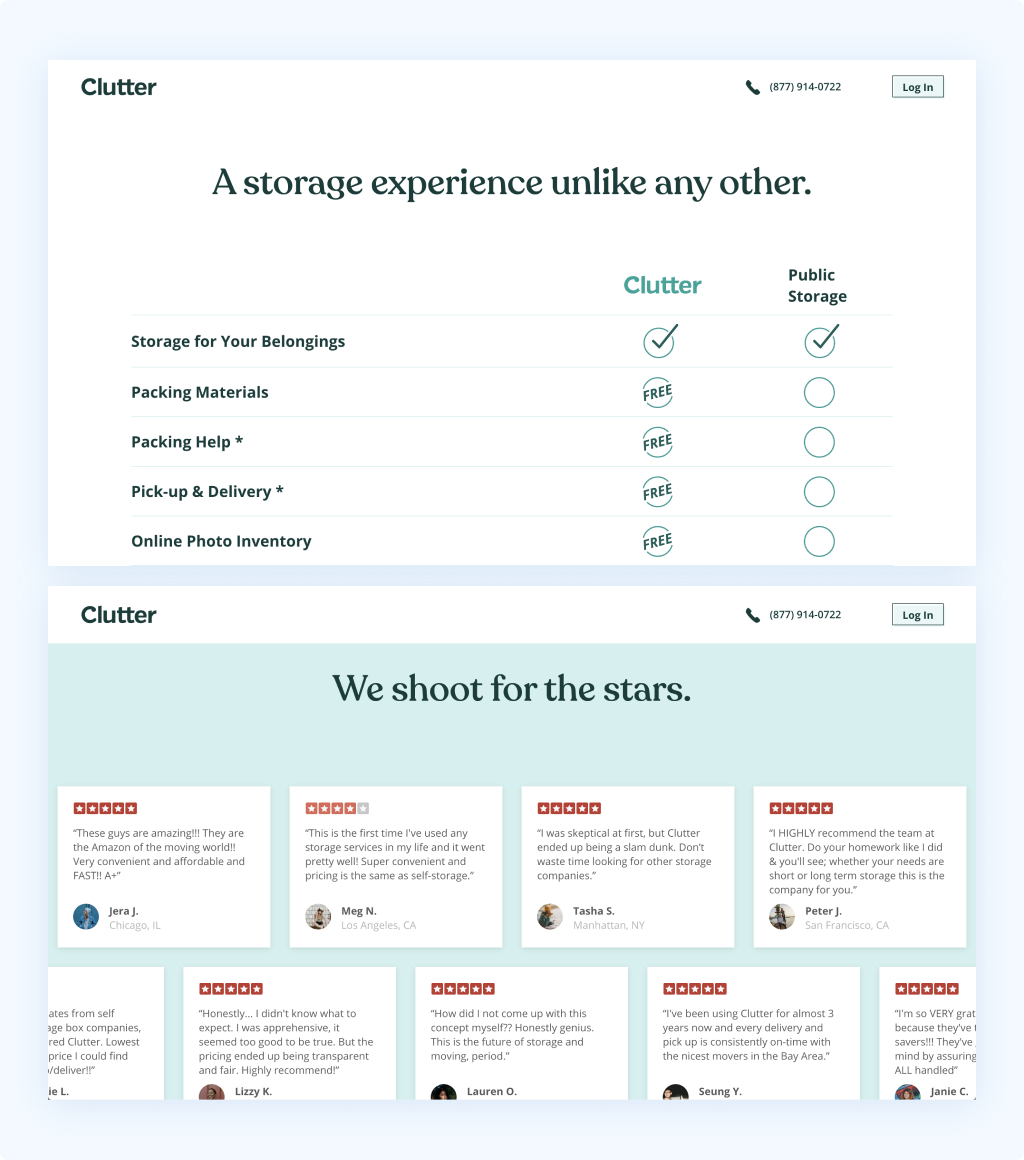Clutter
- Service:
- Web development
- Industry:
- Logistics
- Time-frame:
- 1 year
- Team size:
- 2 developers
Technologies used
Clutter's storage service allows consumers to safely and affordably store their belongings without lifting a finger. Our customer is a full-service storage company. The system Clutter was designed to provide an array of opportunities for storing and transporting customer's items to the secure storage facility.
Summary
The major objective of the Clutter project is to manage the pick up, storage and retrieval of extra stuff. Our team was responsible for such steps of the solution development life cycle: technical specification creation, admin panel interface development, user interface design, system development, statistical analysis, refactoring of the source code, deployment and further continuous improvement. We worked on both frontend and backend systems and helped the platform to grow and develop features.
Requirements
- Refactor existing source code, bring it to the modern code style standards.
- Rework and extend the pricing page to allow users to fill in their personal info and credit card data.
- Create admin user interface for managing customers, staff and storage.
- Create a system of gathering and displaying statistical information about customers, services, personnel and warehouses.
- Create a system for calculating the available storage space, the optimal distribution strategy and staff schedules.
- Extend Stripe API.
Development
Scrum Agile methodology was used for planning short-term sprints to help product owners with flexible planning and quick feedback cycle. We had daily correspondence and regular meetings to fix issues rapidly. We used Jira and then Jixee for task planning and bug tracking.
We refactored the source code to bring it closer to the modern programming standards, added class-based views when required, cleaned code according to PEP8 style standard, improved models architecture, fixed inflexible places. The pricing page was reworked in order to allow users storing their personal data. We added forms and validation, connected Stripe for storing credit card data securely.
Our developers wrote code for processing data on the backend and displaying it in the admin panel. Our team created admin interface based on Django which allows staff to see and modify customer data based on their access level, manage workers schedules, monitor storage availability, track the distribution of customer's possessions.
Aggregated Data and Statistic Information
The essential part of our development was also collecting and displaying statistical information about customers, services, personnel and warehouses. The system of gathering information about customers used these 3 sources:
- Completed questionnaires online.
- The customer’s data received by administrator through online chat.
- The information given by customer by phone.
Based on this information we built a lot of graphs for customers, sales, etc. Using Stripe API we developed a system for processing subscriptions throughout the day. Our developers implemented a process to gather all the necessary information about the customers, services, personnel and warehouses and put it into the administration tables for convenient use.
Technologies
We used Javascript, Angular js., HTML, CSS to create a front-end for the registration system in order to allow users easily provide their contact and payment information and store it in the database. Also, this module was utilized by staff to inform users about special promotions, available discounts and other marketing activities.
We assisted with creating user pages (account, credit card, inventory), user’s admin panel interface and statistics dashboard, information about user’s invoices, online operations with stored items. Our team was engaged in creating the interface for scheduling the delivery system and workers availability (depending on the plan, worker’s role and location).
Also we used Google Map API to create interface for looking up the information about the warehouses locations, their measurements and space availability.
Our team worked with Stripe API to add possibility of charge and refund, implement an interface for managing customers payments and their states, and for syncing the database and creating customers cards, invoices and subscriptions.
Conclusion
With the help of new services Clutter has secured the leading position in its market segment. The new system allowed dynamic growth which has already increased the profit.


